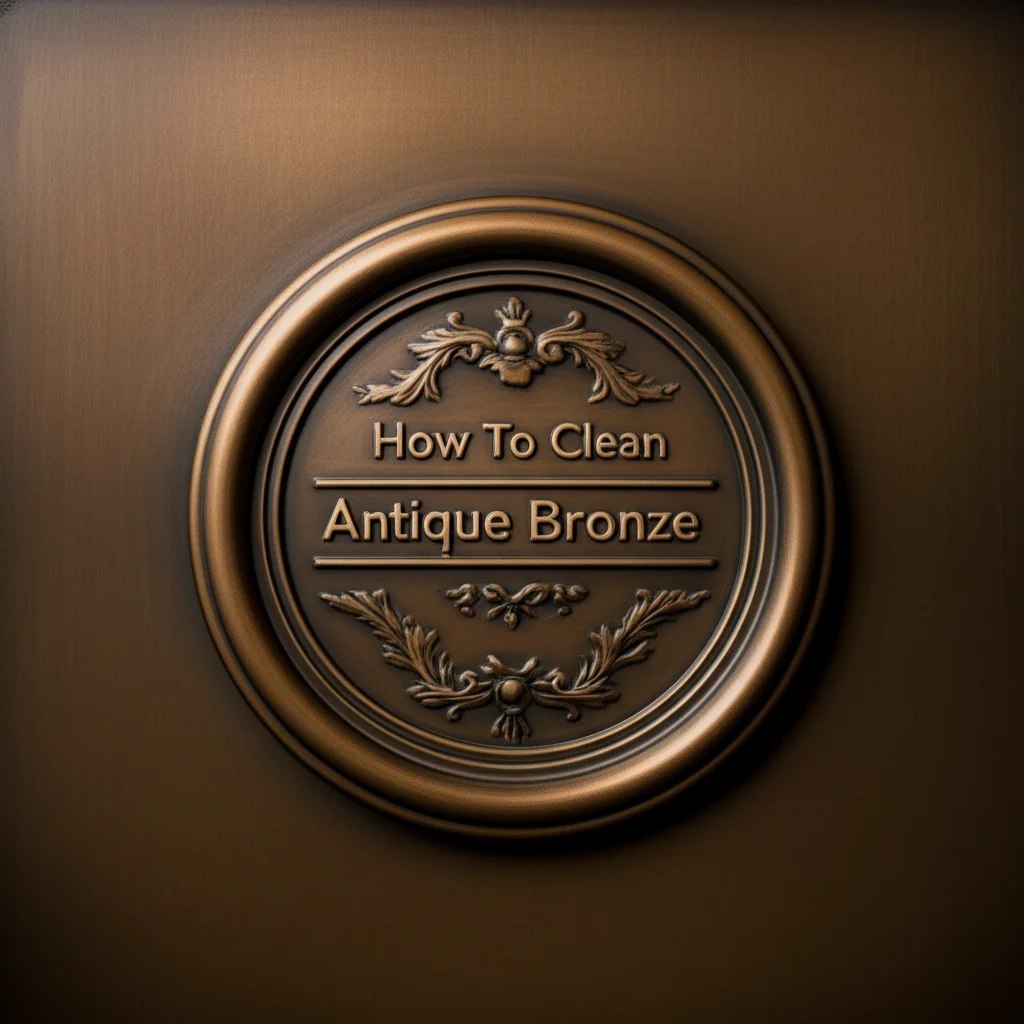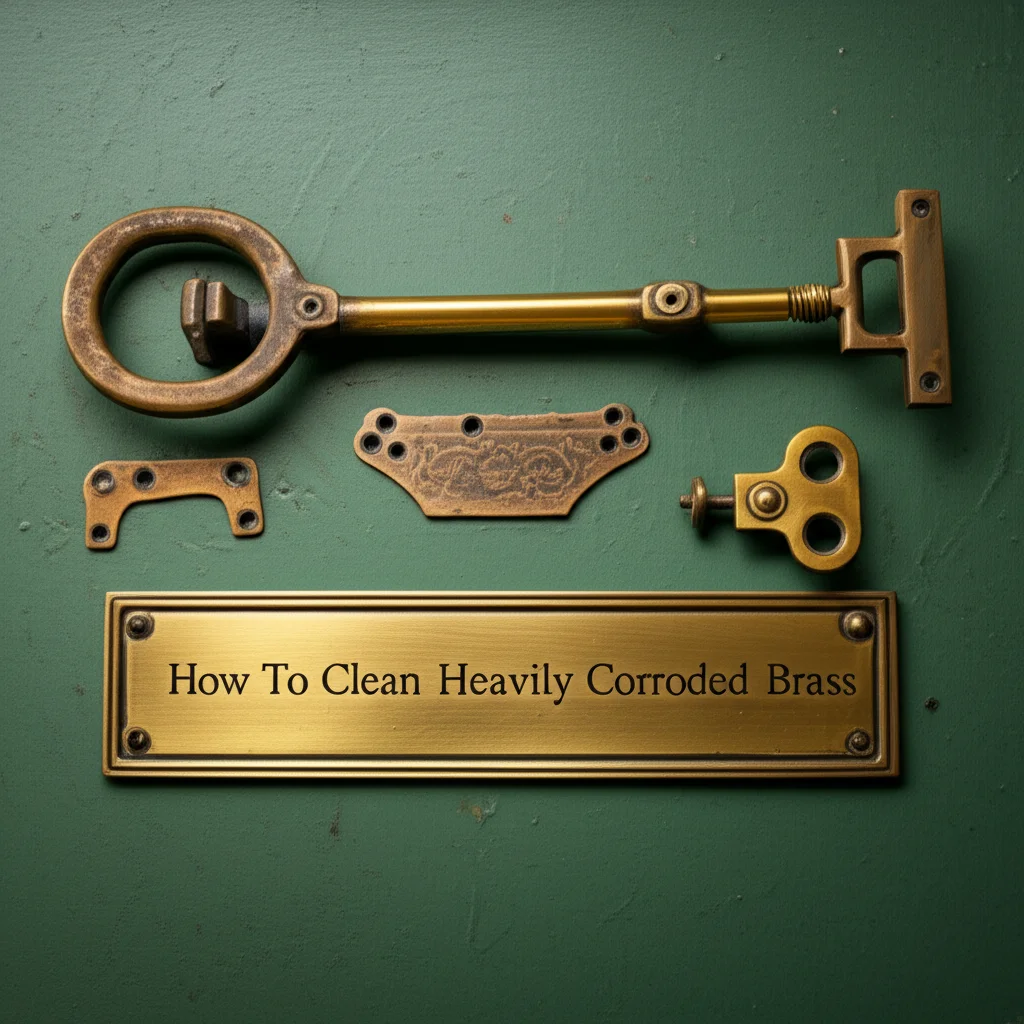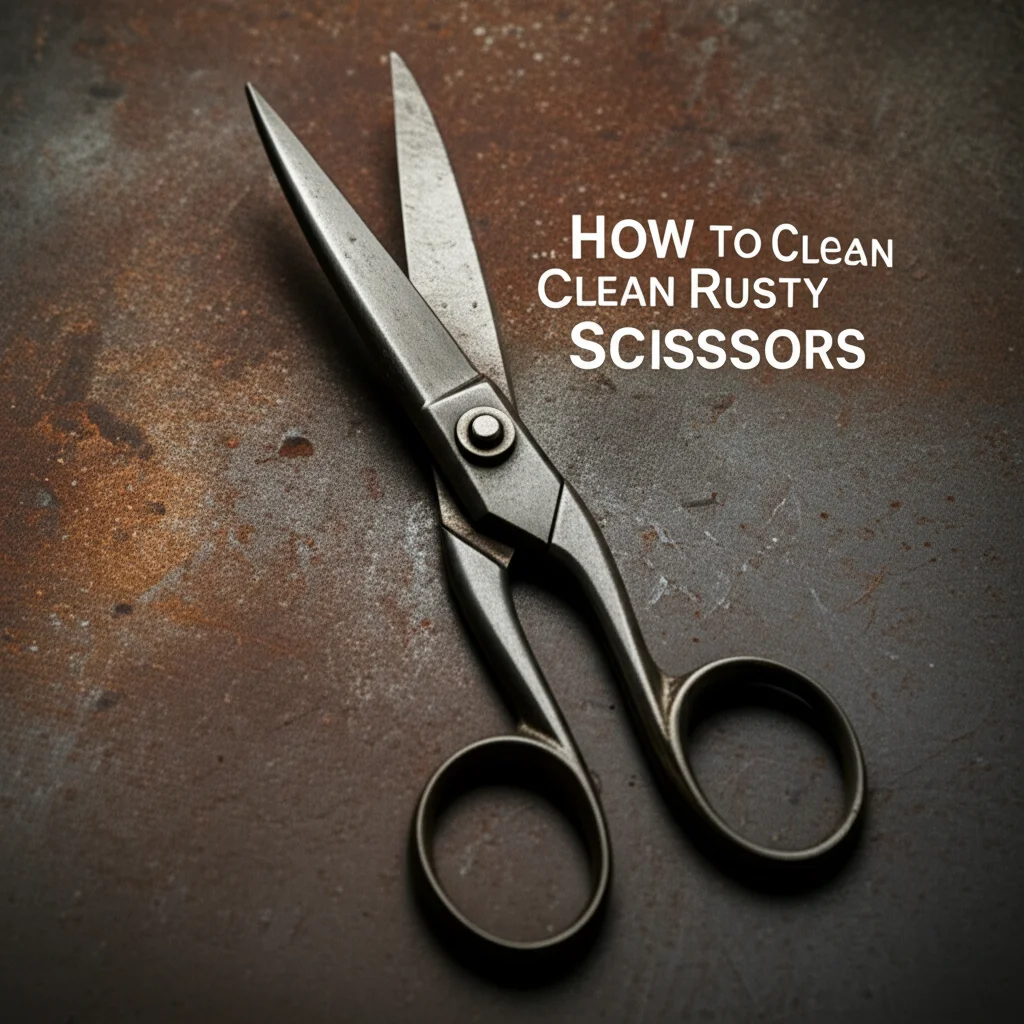· Todd Martin · Antiques Care · 19 min read
How To Clean Antique Bronze

How To Clean Antique Bronze
Do you own a beautiful antique bronze piece? These items hold immense historical and aesthetic value. Over time, antique bronze collects dust, dirt, and sometimes unsightly corrosion. Knowing how to clean antique bronze correctly ensures its longevity and beauty. My guide provides simple steps for careful preservation. You will learn about gentle cleaning agents, proper techniques, and important preservation tips. I will cover everything from initial assessment to ongoing care. This article helps you restore your antique bronze without damaging its precious patina.
Takeaway
Cleaning antique bronze requires care and specific methods. Follow these key steps:
- Identify Bronze and Patina: Understand your item’s material and distinguish natural patina from harmful corrosion.
- Prepare Carefully: Gather gentle tools and always test cleaning solutions in a hidden spot.
- Use Gentle Methods First: Start with distilled water and mild soap for general cleaning.
- Address Stubborn Areas Thoughtfully: Apply specialized techniques like lemon juice paste or olive oil for specific spots.
- Protect After Cleaning: Thoroughly dry and apply a protective wax to seal the surface.
- Avoid Harsh Chemicals: Never use abrasive materials or strong cleaners that can damage the bronze.
To clean antique bronze, use a gentle approach. First, dust the item. Then, carefully wipe it with a soft cloth dampened with distilled water and a few drops of mild dish soap. Rinse thoroughly with clean distilled water and dry immediately with a soft, lint-free cloth. This method preserves the patina.
Understanding Antique Bronze and Its Patina
Antique bronze objects carry stories from the past. Bronze is an alloy, typically made from copper and tin. It has been used for centuries to create statues, decorative items, and household objects. Knowing your item is truly antique bronze guides your cleaning choices. Many pieces look like bronze but are actually brass or plated metals. A simple magnet test can help; magnets do not stick to solid bronze or brass. This identification step is important before you begin any cleaning process.
The most critical feature of antique bronze is its patina. Patina is a protective layer that forms on the surface of bronze over time. It develops through a natural oxidation process. This layer can range in color from shades of green (verdigris) to brown, black, or blue. A rich, stable patina protects the bronze underneath from further corrosion. It also adds character and value to the antique. Many collectors prefer a well-preserved patina. Aggressive cleaning can strip this natural coating away. This reduces the item’s historical integrity and often its monetary value. My goal is always to clean, not to strip.
Sometimes, what looks like patina is actually dirt, grime, or unstable corrosion. True patina is typically smooth and adheres well to the surface. Unstable corrosion, often called “bronze disease” or active verdigris, appears powdery, crumbly, or bright green. It can actively degrade the metal. Distinguishing between a desirable patina and harmful corrosion is crucial. If you see signs of active corrosion, cleaning requires specialized care. Aggressive scrubbing can spread the problem. Always prioritize preserving the existing stable patina while removing only harmful substances.
Your understanding of antique bronze and its patina guides your cleaning method. Each antique bronze piece is unique. Its age, exposure, and original finish influence how its surface has developed. Therefore, a one-size-fits-all cleaning approach is rarely effective or safe. My advice leans towards the gentlest methods possible. We want to remove surface contaminants without disturbing the historical layer. This ensures your antique bronze remains a beautiful and valuable part of your collection for generations.
Essential Preparations Before Cleaning Antique Bronze
Before you even touch your antique bronze with a cleaning cloth, careful preparation is key. Rushing into cleaning can cause irreversible damage. Your first step involves a thorough assessment of the piece. I examine the bronze for its overall condition, noting any existing scratches, dents, or loose parts. Check for any non-bronze components like wood handles, stone bases, or fabric elements. These materials require different cleaning approaches and need protection during the bronze cleaning process.
Next, I identify the type of dirt or corrosion present. Is it just dust and grime? Is it a beautiful, stable patina? Or is it an active, powdery green verdigris? Understanding the nature of the surface accumulation guides your choice of cleaning method. A stable patina should be minimally disturbed. Active corrosion, however, needs careful attention. My cleaning plan adapts to these specific findings. You might even consider if the bronze has a protective coating or lacquer. This can affect how cleaning agents react.
Gathering the right tools and materials is your next step. You will need several soft, lint-free cloths. Microfiber cloths work very well for dusting and wiping. A soft brush, like a clean, dry paintbrush or a soft-bristled toothbrush, can help remove loose dust from crevices. Distilled water is essential; tap water contains minerals that can leave spots or deposits. I also recommend a mild, pH-neutral soap, such as pure castile soap or a gentle dish soap. Cotton swabs are perfect for detailed work. For your safety, wear gloves to avoid transferring oils from your hands to the bronze.
Always perform a spot test before applying any cleaning solution to the entire piece. Find an inconspicuous area, such as the underside or a hidden corner. Apply a tiny amount of your chosen cleaning agent. Wait a few minutes to observe any reaction. This test ensures the solution does not damage the patina or the bronze itself. This step prevents potential widespread damage. It helps confirm your chosen method is safe for your specific antique. For highly valuable or delicate pieces, consider consulting a professional conservator. They offer expert advice and specialized cleaning services.
Setting up a proper workspace prevents accidents and ensures efficiency. Choose a clean, well-lit area. Place a soft towel or protective mat on your work surface. This prevents scratches if you set the bronze down. Make sure you have good ventilation, especially if you plan to use any commercial cleaners. Keep all your tools and materials organized and within easy reach. This methodical preparation ensures a smoother and safer cleaning experience.
Gentle Cleaning Methods for Antique Bronze
The most effective approach for cleaning antique bronze is to start with the gentlest methods. My first step for any antique bronze piece is always dry dusting. Use a soft, clean paintbrush or a very soft, lint-free cloth. Gently brush away loose dust and cobwebs from the entire surface. Pay attention to crevices and decorative details where dust accumulates. This initial dry cleaning prevents grinding abrasive particles into the bronze during wet cleaning. It also helps you see the true state of the surface.
Once dusted, move to gentle wet cleaning. I recommend using warm distilled water. Distilled water prevents mineral deposits from tap water. Add just a few drops of a mild, pH-neutral soap to the water. A good quality, non-detergent dish soap works well. Mix it until a light suds forms. Avoid using too much soap; it can leave residue. This solution is surprisingly effective for removing surface grime and oily films without harming the patina.
Apply the soapy water using a soft, lint-free cloth or a cotton swab for smaller areas. Gently wipe or dab the surface of the bronze. Do not scrub hard. Allow the cloth to absorb dirt, rather than rubbing the dirt around. For intricate details, a cotton swab dipped in the solution can reach tight spots. Work on small sections at a time. This controlled approach helps you monitor the bronze’s reaction. It also prevents the surface from drying out too quickly, which could leave streaks. This gentle cleaning approach is similar to how you might carefully clean delicate items. For example, how to clean antique bottles also emphasizes gentle cleaning to preserve historical integrity. Similarly, when learning how to clean antique silver, the focus remains on gentle, non-abrasive methods to protect the delicate surface.
After cleaning a section with the soapy water, it is crucial to rinse thoroughly. Use a clean cloth dampened with only distilled water. Gently wipe away all soap residue. Any soap left behind can attract more dirt or even react with the bronze over time. Rinse the cloth often or use several clean cloths to ensure you remove all traces of soap. This rinsing step is just as important as the cleaning step itself.
Finally, dry the antique bronze immediately and completely. Use a separate, clean, soft, lint-free cloth. Pat the surface dry, gently absorbing all moisture. Do not air dry the piece. Air drying can lead to water spots or mineral stains, especially if any tap water was accidentally used. Ensuring the bronze is completely dry prevents further oxidation or water damage. This gentle, methodical process helps maintain the beauty and integrity of your antique bronze for years to come.
Addressing Stubborn Stains and Verdigris
Sometimes, gentle cleaning with soap and water is not enough for antique bronze. Stubborn stains or active verdigris require a bit more attention. Before trying anything stronger, make sure you understand the difference. A stable patina is usually uniform in color and firmly attached to the bronze. Active verdigris, or bronze disease, often appears as bright green, powdery, or waxy spots. It signals ongoing corrosion and needs careful removal to prevent further damage. My goal is to tackle these issues without harming the underlying patina.
For minor stubborn spots or to enhance a dull patina, olive oil can be surprisingly effective. I apply a small amount of pure olive oil to a soft cloth. Gently rub it into the bronze surface. The oil helps dissolve light grime and can bring out the richness of the existing patina. After letting it sit for a few minutes, buff the surface thoroughly with a clean, dry cloth. This removes excess oil and creates a soft sheen. This method is not for heavy corrosion but works wonders for minor dullness.
For slightly more persistent stains or very mild, localized verdigris, a paste of lemon juice and baking soda can be considered. This method is mildly acidic and mildly abrasive, so use it with extreme caution and only on a spot-test area. Mix a small amount of baking soda with just enough lemon juice to form a thick paste. Apply a tiny bit of the paste to the affected spot using a cotton swab. Gently rub for only a few seconds. The goal is to lift the stain, not to scrub away the patina. Immediately rinse the area thoroughly with distilled water and dry completely. Overuse or aggressive scrubbing will damage the bronze. This approach is similar to careful methods employed when learning how to clean bronze coins, where preserving intricate details and preventing further degradation is paramount.
Commercial bronze cleaners are available, but I strongly advise against them for antique bronze. Many commercial cleaners contain harsh chemicals or abrasives designed to strip all oxidation, including valuable patina. This can permanently devalue an antique. If you must use a commercial product, ensure it is specifically labeled for antique bronze and test it in an extremely hidden area first. However, natural and gentle methods are almost always safer and more respectful of the antique’s history. My preference is to avoid these products entirely for truly antique pieces.
When dealing with more extensive or aggressive verdigris, especially if it is powdery or spreading, consider professional help. A professional conservator has specialized tools and knowledge to safely stabilize and remove active corrosion. Attempting to remove severe verdigris yourself can cause more harm than good. For larger pieces, such as outdoor sculptures, different challenges apply. Information on how to clean bronze statue can offer broader perspectives, but antique indoor pieces often require more delicate care. Your antique bronze deserves careful treatment to preserve its character and integrity.
Specialized Cleaning for Intricate Bronze Pieces
Cleaning intricate antique bronze pieces presents unique challenges. Many antique bronzes feature delicate details, filigree, or complex sculptural elements. These areas collect dust and grime just like flat surfaces, but they are harder to reach and clean safely. My approach focuses on precision and patience to protect these fine features. You need to use tools that can access tight spaces without causing damage.
For cleaning small crevices and ornate designs, cotton swabs are indispensable. Dip a cotton swab in your mild soap and distilled water solution. Gently roll the swab over the detailed areas. The fibers of the cotton swab can pick up dirt from recessed parts. Change the swab frequently as it becomes dirty. This prevents spreading grime. For very stubborn dirt in tiny grooves, you can try using a wooden toothpick. Be extremely careful not to scratch the bronze. I only use the very tip of the toothpick, and never apply pressure.
Handling very delicate sculptures or pieces with thin, fragile parts requires extra caution. Support the piece properly while cleaning. Avoid putting pressure on vulnerable areas. For example, if cleaning a bronze figure, support its base or main body, not a outstretched arm or delicate wing. Use very light strokes and minimal moisture. Sometimes, a soft artist’s brush can gently sweep away dust from extremely delicate filigree that cannot withstand even a cotton swab. Think of this process as a delicate restoration, not just a clean. For similar insights on handling fragile items, exploring guides on how to clean antique jewellery or even how to clean bronze jewellery can provide valuable techniques for precision and care with small, detailed objects.
Many antique bronze pieces are not made entirely of bronze. They might be composite items with attached materials like wood, stone, marble, or even fabric. Cleaning these pieces means you must protect the non-bronze elements. Water and soap that are safe for bronze might damage wood or fabric. If possible, avoid getting any cleaning solution on these attached materials. For example, if your bronze statue has a marble base, clean the bronze first. Then, clean the marble separately using appropriate methods for stone. You can use masking tape or plastic wrap to shield adjacent materials during cleaning.
Knowing when to stop and seek professional help is a sign of good stewardship. If an antique bronze piece has significant active corrosion, large areas of damage, or extremely delicate construction, a professional conservator is the best resource. They have specialized training, equipment, and chemicals that are not available to the average homeowner. They can perform intricate repairs and stabilize conditions that are beyond DIY capabilities. Consulting a professional ensures the long-term preservation and value of your cherished antique. Do not hesitate to seek expert advice for truly challenging pieces.
Post-Cleaning Care and Preservation for Antique Bronze
Once you have carefully cleaned your antique bronze, the job is not over. Proper post-cleaning care and ongoing preservation are vital. These steps ensure your efforts last and protect the bronze from future damage. The most critical step immediately after cleaning is thorough drying. Even small amounts of leftover moisture can encourage new corrosion or unsightly water spots. I use a clean, soft, lint-free cloth to gently pat the entire surface dry. For intricate areas, you can use a hairdryer on a cool, low setting, held at a safe distance, to ensure all moisture evaporates. Do not air dry the piece.
After ensuring the bronze is completely dry, consider applying a protective wax. This adds an extra layer of defense against moisture, dust, and handling. A microcrystalline wax, such as Renaissance Wax, is highly recommended by conservators. It forms a clear, non-yellowing, protective barrier. I apply a very thin, even coat of the wax with a soft cloth. Allow the wax to dry for a few minutes, then gently buff it with another clean, soft cloth until you achieve a subtle sheen. This wax layer helps preserve the cleaned surface and the underlying patina. It also makes future cleaning easier.
Proper storage and display conditions play a major role in preserving antique bronze. Avoid placing your bronze pieces in areas with high humidity or extreme temperature fluctuations. High humidity encourages corrosion. Stable environments are best. Keep bronze away from direct sunlight, which can cause uneven heating and affect the patina. Also, protect pieces from dust accumulation by displaying them in enclosed cabinets or behind glass. For antique pieces, conditions similar to how to clean mildew off antique wood furniture often apply, as both require stable environments to prevent environmental damage. The general care for antique metals, like how to clean antique brass hardware, often involves similar environmental considerations to prevent tarnish and damage.
Regular maintenance helps keep your antique bronze in top condition. Instead of waiting for heavy grime to build up, perform light dusting regularly. Use a soft cloth or a very soft brush to remove surface dust. This prevents dirt from bonding to the bronze and becoming difficult to remove later. Avoid touching the bronze surface directly with bare hands too frequently. The oils from your skin can leave fingerprints that might react with the metal over time. If you must handle the bronze often, consider wearing clean cotton gloves.
By following these post-cleaning care and preservation steps, you extend the life and beauty of your antique bronze. Your efforts ensure that the piece remains a valuable and cherished part of your collection. Consistent, gentle care is the key to long-term preservation.
What NOT to Do When Cleaning Antique Bronze
Learning how to clean antique bronze is not just about knowing what to do, but crucially, what not to do. Many common cleaning practices, while effective on modern items, can cause irreversible damage to antique bronze. My strongest advice is to avoid harsh abrasives. Materials like steel wool, scouring pads, or even abrasive cleaning powders will scratch the bronze surface. They will also completely strip away the valuable patina. Once the patina is gone, it cannot be easily recreated, and the bronze loses its historical character and much of its value.
Never use strong chemical cleaners on antique bronze. This includes ammonia-based cleaners, bleach, strong acids like undiluted vinegar, or commercial metal polishes not specifically formulated for antiques. These harsh chemicals can aggressively strip the patina, leaving the bronze with an unnatural, shiny appearance. They can also cause pitting or discoloration. Some chemicals can react with the metal over time, leading to further, more destructive corrosion. If a cleaning agent smells strong or causes immediate fuming, it is almost certainly too harsh for your antique bronze.
A common mistake is over-cleaning or “shining” antique bronze. The goal for antiques is preservation, not perfection. Many people try to make bronze look brand new, like a modern piece. This involves removing all traces of the natural patina. Doing so not only strips the item of its historical authenticity but also significantly reduces its antique value. A well-maintained patina is a sign of age and character, highly prized by collectors. My approach is to remove dirt and harmful corrosion, while embracing and protecting the natural patina.
Avoid aggressive scrubbing or rubbing, even with gentle cloths. Excessive friction can wear down the surface, especially on raised details or delicate areas. It can also unevenly remove the patina, leaving patchy spots. Always use light, gentle strokes and allow your cleaning solution to do the work, not brute force. If dirt is not lifting easily with gentle methods, it is better to leave it than to risk damaging the bronze. This is often where professional conservators come in, using methods that are beyond home cleaning.
Finally, do not immerse antique bronze pieces in water for extended periods, especially if they have internal mechanisms, hollow sections, or attached non-metal parts. Trapped moisture can cause corrosion from the inside out or damage other materials. Always clean small sections, rinse quickly, and dry immediately. By understanding and avoiding these common pitfalls, you can ensure your antique bronze remains in its best possible state, preserving its beauty and historical integrity for generations.
FAQ Section
How often should I clean antique bronze?
You should clean antique bronze only when it is visibly dirty or shows signs of active corrosion. For well-maintained pieces, light dusting once a month is often enough. Deeper cleaning with water and mild soap might be needed every few years, depending on environmental factors. Over-cleaning can damage the valuable patina.
Can I use vinegar to clean antique bronze?
I do not recommend using vinegar to clean antique bronze. Vinegar is acidic and can aggressively strip away the natural patina, which is crucial for an antique’s value and protection. While it might clean, it can leave the bronze looking unnaturally shiny and vulnerable to future corrosion. Stick to gentler methods.
What is verdigris and how do I remove it?
Verdigris is a green or bluish corrosion that forms on copper and bronze. It can be a stable, desirable patina or an active, powdery form (“bronze disease”). Remove active verdigris carefully by dabbing it with a cotton swab dampened with distilled water and mild soap, or in extreme cases, a very dilute lemon juice solution, followed by thorough rinsing and drying. For widespread or persistent verdigris, consult a professional conservator.
Does cleaning antique bronze reduce its value?
Aggressive cleaning, especially methods that strip the natural patina, will significantly reduce the value of antique bronze. The patina is a sign of age and authenticity, highly prized by collectors. Gentle cleaning that preserves the patina and removes only surface dirt or harmful corrosion can maintain or even enhance its value by revealing its inherent beauty.
How can I protect cleaned antique bronze?
After cleaning, protect antique bronze by ensuring it is completely dry. Then, apply a thin coat of microcrystalline wax, like Renaissance Wax. This wax creates a protective barrier against moisture and dust. Store or display the bronze in a stable environment, away from high humidity, extreme temperatures, and direct sunlight. Regular light dusting also helps prevent grime buildup.
Can all antique bronze pieces be cleaned the same way?
No, not all antique bronze pieces should be cleaned the same way. The best method depends on the item’s condition, the type of patina, and whether it has attached materials like wood or stone. Always start with the gentlest method. For very delicate, intricately detailed, or highly corroded pieces, professional conservation is often the safest and most effective approach.
Conclusion
Caring for antique bronze pieces allows you to preserve their beauty and history for generations. My guide on how to clean antique bronze emphasizes a gentle, informed approach. We have covered understanding patina, preparing your workspace, and using mild cleaning solutions. I hope you now feel confident using distilled water and gentle soap for most cleaning tasks. For stubborn spots, methods like olive oil or a very cautious lemon juice paste can help. Remember to protect delicate areas and other materials.
The key message is simple: preserve, do not polish away. The natural patina is a cherished part of an antique bronze item’s character and value. Thorough drying and applying a protective wax are crucial post-cleaning steps.
Knowing what to avoid, such as harsh abrasives or strong chemicals, is equally important. By treating your antique bronze with respect and care, you ensure its continued beauty. Enjoy the process of bringing out the best in these magnificent historical pieces. They will reward your careful efforts with lasting elegance.





